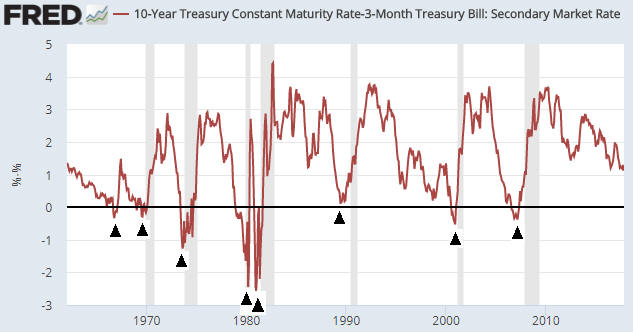The amount of gold mined in a year is only about 1.5% of the total existing stock of gold, which is why changes in gold production have almost no effect on the gold price. It is also why changes in the cost of mining gold do not affect the gold price. In fact, cause and effect works the other way around — the change in the market price of gold determines, with a lag, the average cost of mining gold. To put it another way, the cost of mining gold follows the price of gold.
What happens is that as the gold price rises, mineral deposits or parts of deposits that were previously uneconomic become economic and start being mined. The mining of this lower-grade/higher-cost gold pushes up the average cost of production. And as the gold price falls, lower-grade/higher-cost gold is left in the ground and the average cost of production moves downward. Of course, there are substantial time-lags involved, because it takes years to bring a new mine into production and because mine plans won’t be changed in response to a price trend until the trend has been in progress for long enough to appear sustainable.
Adding to the tendency for the mining cost to follow the price is that after the price has been trending upward for a long period there will be less focus on cost control and more focus on growth, with the opposite being the case after the price has been trending downward for a long period.
Perhaps not surprisingly given that the Bitcoin system was designed to mimic gold in some respects, the relationship between the bitcoin mining cost and the bitcoin price is the same as the relationship between the cost of mining gold and the gold price. That is, the average cost of mining a bitcoin moves up and down with the price. That’s why, several years ago, it was profitable to mine bitcoins when the price was less than $1 and why the average cost of mining a bitcoin has since risen to around US$5,000.
One difference between gold and bitcoin is that the bitcoin mining industry can respond very quickly to changes in price. Whereas it probably will take at least a strong 3-year trend in the gold price to bring about a substantial change in the average cost of mining an ounce of gold, it takes almost no time to put a new bitcoin mining rig into operation and even less time to turn it off.
The way the Bitcoin distributed ledger system is designed, the computational gymnastics that have to be performed to add new blocks to the ‘chain’ and create new bitcoins scale up and down based on the total amount of computing power dedicated to the task. And the amount of computing power dedicated to the task will be dictated by the price. That is, the lower the price the smaller will be the total amount of resource (computing power and electricity) channeled into obtaining the reward of a new bitcoin, thus reducing the difficulty of performing the computations that verify transactions and the associated mining cost.
Therefore, if the price of a bitcoin falls from its current level of around $8,500 to only $100, mining bitcoins will remain a profitable business. It’s just that the quantity of resources being consumed/wasted by the mining process will be a small fraction of what it is today. Alternatively, if the price of a bitcoin skyrockets to $100,000 then the cost of mining bitcoin will also skyrocket, meaning that the quantity of resources being consumed by a process that adds nothing to the general standard of living will be vastly greater than it is today.
Returning to gold, a popular argument is that gold is an inefficient form of money due to the high cost of adding a new ounce to the existing stockpile. However, the relatively high cost of mining an ounce of gold is incurred regardless of whether or not gold is money; it is incurred because humans want to own gold and value it highly.
To further explain, well before gold was used as money, people liked to have it in their possession because of its physical characteristics: its look, feel, weight, malleability and extraordinary resistance to deterioration. In fact, it was the widespread desire to own gold that led to gold becoming money. And now that gold is no longer money (due to government command, not market preference), billions of people still desire it enough to cause the price and the mining cost to be relatively high. Allowing gold to be money again would therefore impose no additional cost.
Bitcoin is obviously different, in that its high price and associated high production cost are due solely to the possibility that it will, at some future time, be widely used as a medium of exchange. I think that the probability of this possibility is close to zero and therefore that the price of a bitcoin will eventually drop to near zero, but at the same time I think that the blockchain idea is brilliant.
 Print This Post
Print This Post




